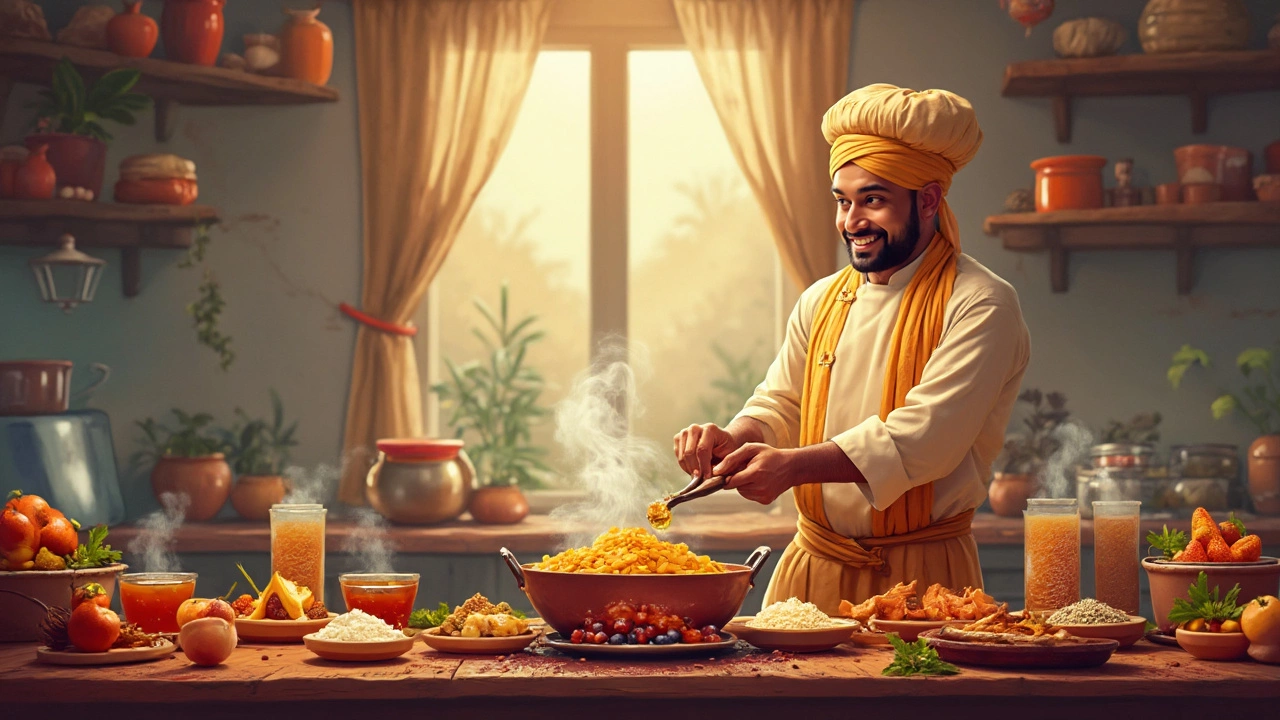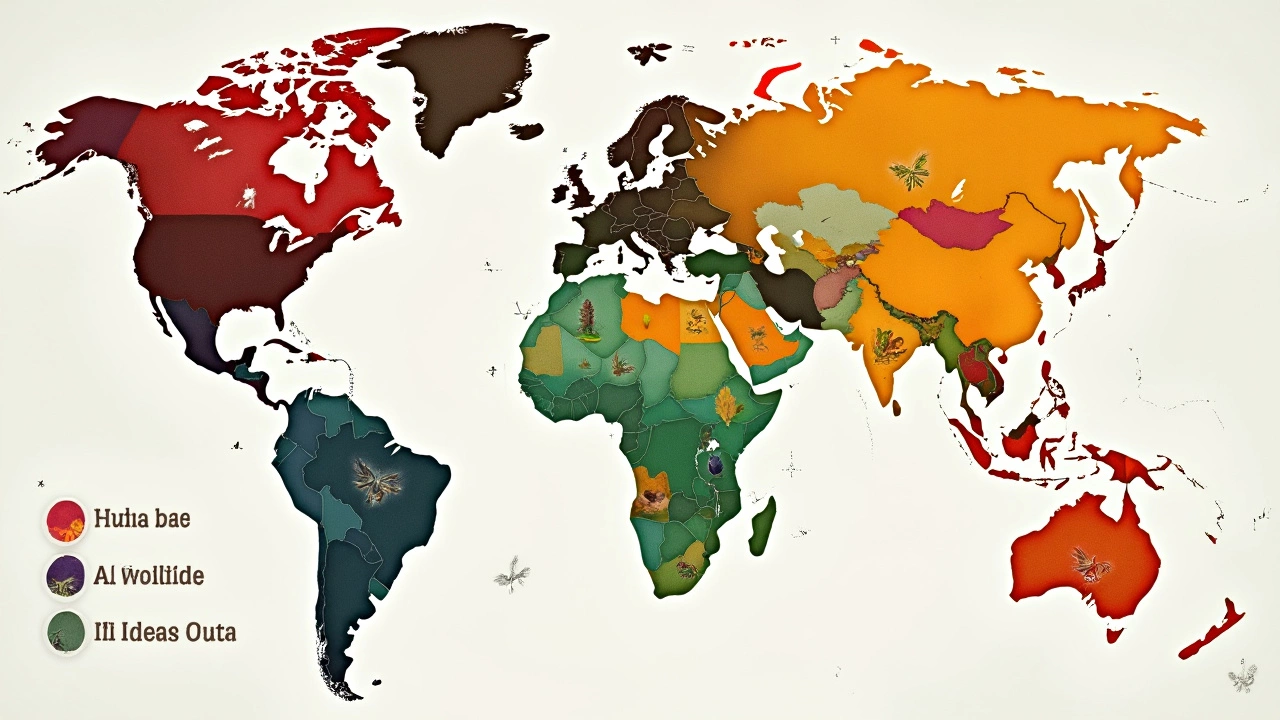Which Country Consumes the Least Sugar?

Sugar—it's everywhere, right? We all know it's lurking in our favorite snacks and drinks. But have you ever wondered which country is consuming the least of it? Turns out, not everyone is on a sugar high all the time. Some nations have got this sugar thing down to a science.
Let's take a little tour around the globe and see who's winning the low sugar game. And here's the kicker—you can take a page or two out of their book and apply it to your Indian sweet treats too.
Sugar consumption isn't just about what we stop eating. It's also about how some folks are making smart swaps and finding new ways to satisfy their sweet tooth without going overboard. So, if your goal is to cut back a bit while still enjoying those homemade laddoos, stick around. There are tips galore to blend health with flavor.
- Global Sugar Consumption
- Countries with Low Sugar Intake
- How They Do It
- Tips for Reducing Sugar in Indian Sweets
- Balancing Health with Sweet Cravings
Global Sugar Consumption
When it comes to sugar, our global sweet tooth is pretty evident. On average, worldwide sugar consumption clocks in at about 25 kilograms per person each year. That's a lot of spoons of the sweet stuff!
Developed countries like the United States top the list with upwards of 40 kilograms annually per person. Yikes! That's a bit much, don't you think? But before we start pointing fingers, let's look at how different regions are doing with sugar.
Breaking Down the Sugar Stats
Here's an interesting tidbit: certain countries in Asia and Africa actually boast relatively low sugar intake. In rural parts of China, the yearly per capita consumption can be as low as 10 kilograms. In places like Indonesia and parts of West Africa, sugar consumption can hover around 16 kilograms, way below the global average. These numbers aren't just random. They reflect diverse culinary practices and different levels of industrialization and economy.
What's Driving the Numbers?
So why do some countries eat less sugar? A lot of it comes down to traditional diets. For instance, many East Asian cuisines traditionally use less sugar and rely more on savory flavors. Meanwhile, economic factors also play a role. In places where sugar is expensive or less available, people just consume less of it.
There's also a growing global movement toward reducing sugar due to health awareness. With rising obesity and diabetes rates, many nations are starting to crack down on sugar by imposing taxes or promoting healthier alternatives.
If you feel like you're stuck in a sugar fog, take a cue from these nations. Cut back on sugar products, and you might just feel lighter and healthier.
Countries with Low Sugar Intake
It's a bit surprising to realize that not all countries have sugar flowing like a river. Some places actually consume shockingly low amounts of the sweet stuff. Let's spotlight a few countries known for their minimal sugar intake and see what's cooking there.
Japan
Japan is famous for its meticulous approach to health, which reflects in their diet. The Japanese traditionally eat foods that are rich in fresh, raw ingredients. This means lots of fish, rice, and veggies, with sugar taking a backseat. Instead of sugary desserts, they often enjoy fresh fruits or minimally sweetened treats. No wonder they're among the healthiest nations!
Norway
Norway keeps sugar on the down-low too. Thanks to strong health policies and consumer awareness, Norwegians tend to keep their sugar intake balanced. Plus, there's a cultural preference for homemade over processed foods, which helps keep sugar consumption lower.
Italy
Even in pasta-loving Italy, sugar consumption isn't off the charts. Italians have a love for fresh, home-cooked meals that highlight quality ingredients over processed ones. Traditional Italian desserts are often less sweet compared to their American counterparts. They let the natural flavors shine through without overpowering it with sugar.
Interestingly, there's a trend across these countries: low sugar consumption often pairs with a culture that values fresh, whole foods and minimal processing. It's food for thought, especially when trying to reduce one's own sugar intake without sacrificing flavor.
Check Out These Sugar Stats
If you're a fan of numbers, take a look at this table showing average added sugar consumption per person annually in some of these countries (in kg):
| Country | Average Sugar Intake |
|---|---|
| Japan | 16.5 |
| Norway | 23.0 |
| Italy | 27.0 |
While these figures are estimates, they speak volumes about how some cultures manage to keep sugar intake surprisingly low. So, if you're looking to cut some sugar in your own life, it might help to look at what they're doing in these countries—and maybe try one of their traditional recipes!

How They Do It
Ever wondered how some countries keep their sugar consumption so low? It's all about choices and habits, really. Let's dive into a few clever strategies these nations use to keep them from overindulging in the sweet stuff.
Smart Eating Habits
A big part of maintaining low sugar levels comes down to the kind of snacks that are popular. For example, Japan, known for its low sugar intake, often chooses fresh fruits over sugary snacks. They enjoy seasonal produce, and dessert is usually a petite, subtly sweetened treat.
Meanwhile, in South Korea, meals tend to focus on savory flavors. Instead of sugar-loaded sauces, they go with spicy or fermented options like kimchi, which naturally adds flavor without the high sugar hit.
Cultural Preferences
In Mediterranean countries like Greece, desserts might often feature honey or dried fruits as natural sweeteners in moderation. It's more about enhancing flavors than masking other tastes with a sugary overload.
Moreover, traditional diets in places like Africa or South America inherently include staples like whole grains and vegetables, keeping added sugars in the 'sometimes food' category—rather than a daily habit.
Stats on Sugar Consumption
| Country | Average Sugar Intake (grams/day) |
|---|---|
| Japan | 48 |
| Greece | 68 |
| South Korea | 52 |
Countries like these have managed to naturally adopt diets that keep sugar consumption in check without making it a full-time job. It's less about restrictions and more about picking the right foods that help fulfill dietary needs while keeping sugar levels on the low.
By looking at their habits, you can find inspiration to reduce sugar in your own kitchen, even when making those beloved Indian sweets. Sometimes, the switch can be as simple as using dates or cardamom to enhance the flavors instead of pouring in extra sugar.
Tips for Reducing Sugar in Indian Sweets
Everyone loves a good gulab jamun, but the sugar - not so much. So, how do you enjoy your favorite Indian sweets without feeling overindulgent? Let's look at some handy tips to cut down the sugar while keeping the flavor alive.
Go Natural with Sweeteners
Fancy the taste of natural sweetness? Think jaggery or honey. These not only reduce sugar content but also add a depth of flavor to sweets like laddoos or kheer. Plus, they’re less processed than regular sugar.
Use Fruits
Fruits are nature’s candy. Dates, bananas, and applesauce can be great sugar substitutes. Ever tried date-sweetened coconut barfi? It’s a sweet revelation!
Portion Control
If reducing sugar seems a tall task, focus on making smaller pieces. By making portions smaller, you can still enjoy a gingery gajar halwa without loading up on sugar.
Spice Things Up
Spices like cardamom, cinnamon, and nutmeg can make sweets seem sweeter, tricking your taste buds into believing there’s more sugar than there is. Try adding extra cinnamon to your payasam for an extra punch!
Be Smart with Condensed Milk
Condensed milk is a staple but also a sugar bomb. Use coconut milk or almond milk in place of half the condensed milk. You’ll cut the sugar without compromising on creaminess.
Data Insights: Sugar Alternatives
| Sweetener | Calories per 100g |
|---|---|
| Honey | 304 |
| Jaggery | 383 |
| Sugar | 387 |
| Dates | 282 |
Keep an eye on these numbers and you’ll see how swapping out regular sugar can shave those calorie numbers down.
By tweaking your recipes with these tips, you can nail the balance between enjoying your sweets and sticking to a healthier sugar intake. After all, moderation and smart choices make all the difference!

Balancing Health with Sweet Cravings
Trying to cut down on sugar doesn't mean you have to quit sweets altogether. There are plenty of smart ways to enjoy your favorite Indian sweets without overloading on sugar. It's all about balance and making thoughtful choices.
Smart Substitutions
One trick is to swap out regular sugar for natural sweeteners like honey or jaggery. They often have a deeper flavor and can sometimes let you use a little less. But remember, they're still high in calories, so don’t go wild with them.
Smaller Portions
Another tip: keep an eye on portion sizes. Instead of three large pieces of gulab jamun, maybe try one or two and really savor each bite. Smaller servings help in reducing that sugar intake without leaving you feeling deprived.
Boost Nutrient Value
Consider boosting the nutritional value of your sweets. Add nuts and seeds to your recipes. Think about a handful of almonds in your payasam or sprinkle sesame seeds over your til laddoos. These add-ins bring protein and fiber to the party, slowing sugar absorption.
Mindful Eating
Finally, practice mindful eating. Enjoy your sweets slowly, pay attention to the flavors and textures. It makes eating a more fulfilling experience and tricks your mind into feeling satisfied with less.
If you're curious, here’s a quick look at how two fruits compare in terms of natural sugars:
| Fruit | Sugar Content (per 100g) |
|---|---|
| Apples | 10g |
| Bananas | 12g |
The fresher and less processed your ingredients, the more you enjoy the sweetness without needing extra sugar. Keeping things balanced is key to satisfying your sweet cravings while maintaining a healthy lifestyle.